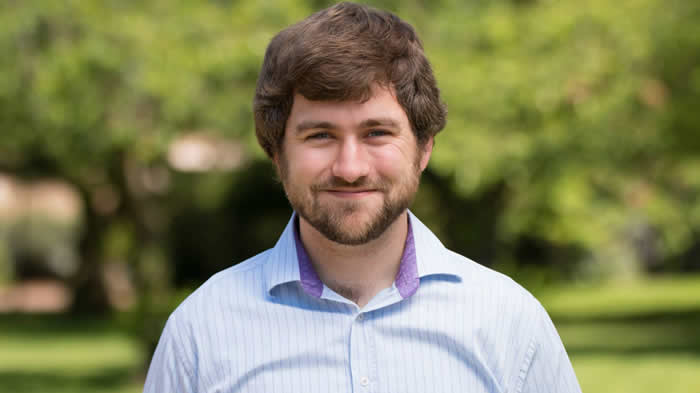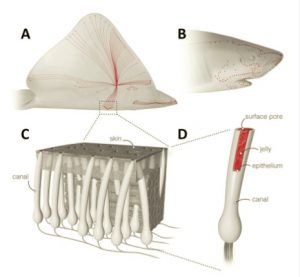 Sharks and rays have long been known for their ability to sense the very weak electric fields produced by their prey and other animals in the ocean. A new study published May 13 in Science Advances offers a leap forward in understanding how sharks and their kin do this — and also reveals the discovery of the most efficient proton conductor in the natural world.
Sharks and rays have long been known for their ability to sense the very weak electric fields produced by their prey and other animals in the ocean. A new study published May 13 in Science Advances offers a leap forward in understanding how sharks and their kin do this — and also reveals the discovery of the most efficient proton conductor in the natural world.
The team of researchers from the UW, the University of California, Santa Cruz (UCSC) and the Benaroya Research Institute at Virginia Mason in Seattle investigated the small pores in the skin around the head and on the underside of sharks and other cartilaginous fish. These pores are part of an organ called the ampullae of Lorenzini. Each pore connects to a set of cells that are sensitive to electricity. The pores and cells are connected by long, jelly-filled canals.
It’s the jelly in these canals that turns out to be such a remarkable conductor of protons. So remarkable, in fact, that its conductivity approaches that of the current state-of-the-art proton-conducting material Nafion — the jelly’s proton conductivity is only 40 times lower than Nafion’s.

The surface pores on a shark’s head or underside are connected to electrosensitive cells by a jelly-filled canal. The jelly is the most efficient proton conductor in nature.
First author on the study, UW EE doctoral student Erik Josberger, was very surprised by the results when he first measured the jelly’s proton conductivity.
“Given that Nafion is a carefully prepared material that’s very precisely made, it was interesting to see the shark had naturally replicated something close to that material,” he said.
Nafion is used in batteries and fuel cells, which suggests that a better understanding of the jelly in sharks’ ampullae could lead to improved proton exchange in those technologies. Marco Rolandi, affiliate associate professor of materials science and engineering and an associate professor of electrical engineering at UCSC, also suggested possible applications to sensor technology.
See also:

